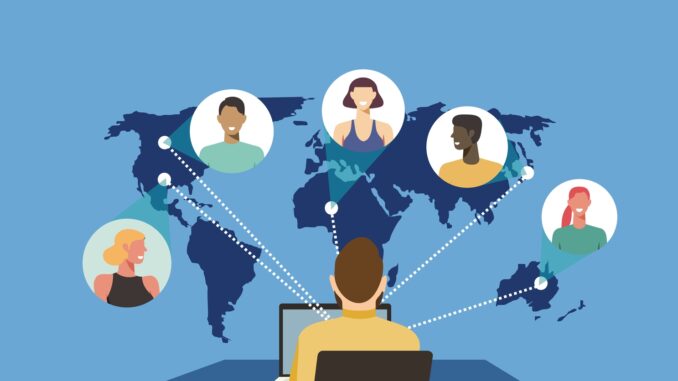
Online education has fundamentally changed how we access knowledge and skills, opening doors to learning opportunities worldwide. One of the most significant impacts of this shift is the global accessibility it offers. Today, people from diverse backgrounds, locations, and circumstances can access high-quality education at their fingertips. This post explores how online learning breaks down barriers and democratizes education across the globe.
Breaking Geographic Barriers
In the past, access to quality education was often limited by geographical location. Many students in rural or underserved areas faced significant challenges in reaching educational institutions. Travel costs, time constraints, and lack of nearby schools created substantial barriers.
Online education has eliminated these obstacles. Now, anyone with an internet connection can enroll in courses, attend virtual classrooms, and learn from top-tier institutions, regardless of where they live. From remote villages to urban centers, online education is reaching every corner of the globe.
Affordable Education for All
Education has historically been expensive, especially in countries where tuition fees for universities or private institutions are prohibitively high. Even in nations with public education systems, the cost of materials, transportation, and additional fees can add up, leaving many unable to pursue their educational goals.
Online education offers a cost-effective alternative. Many platforms provide free or low-cost courses, while universities and institutions often offer online degree programs at a fraction of the cost of traditional on-campus degrees. This affordability makes education more accessible to individuals from varying economic backgrounds, allowing a broader population to pursue their academic and professional goals.
Accessibility for Students with Disabilities
For students with disabilities, traditional educational environments can present significant challenges. Physical access to campuses, as well as the ability to participate in classroom activities, can be barriers for those with mobility issues, visual or auditory impairments, or learning disabilities.
Online education platforms are addressing these needs by offering adaptive technologies and inclusive features. Text-to-speech software, subtitles, closed captions, and customizable interfaces ensure that students with disabilities can learn on an equal footing with their peers. This inclusivity allows learners to access content at their own pace and in formats that suit their needs.
Language and Cultural Inclusivity
Language has always been a barrier to education, especially in countries where the primary language of instruction differs from the student’s native tongue. However, the rise of multilingual online learning platforms has revolutionized this aspect of accessibility.
Today, many online platforms offer courses in multiple languages, enabling students from non-English-speaking regions to access the same high-quality education as their counterparts in English-speaking countries. Additionally, cultural diversity is becoming a core focus of many online courses, creating content that respects and acknowledges different cultural perspectives.
Bridging the Digital Divide
While online education has brought many advantages, access to the internet remains a challenge in some parts of the world. The digital divide, or the gap between those who have access to digital technologies and those who do not, continues to be a significant issue.
However, global initiatives are underway to improve internet connectivity in remote and underserved regions. Governments, NGOs, and private companies are investing in infrastructure to expand access to broadband and mobile data. As internet access improves, more students will be able to take advantage of the opportunities provided by online learning.
Mobile Learning: Education Anywhere, Anytime
One of the key benefits of online education is the flexibility it offers. With mobile technology, students can access learning materials anytime, anywhere, on a variety of devices—from smartphones to tablets to laptops. This flexibility is particularly important for students in developing countries, where unreliable access to computers and educational institutions might otherwise limit their ability to pursue education.
Mobile learning apps make it possible for students to learn on the go, whether on public transportation, during breaks at work, or at home. This “education on demand” is especially valuable for adult learners and those juggling family, work, and education.
The Role of International Partnerships
Many universities and institutions are now partnering with organizations worldwide to expand access to their courses and programs. These collaborations include partnerships with governments, local educational institutions, and nonprofit organizations to offer online education to students who might otherwise not have access.
International partnerships can help overcome challenges like local infrastructure limitations, limited resources, and the lack of trained educators in certain areas. By working together, organizations can bring online education to a wider global audience, creating pathways for individuals who may have previously been excluded from formal learning opportunities.
Lifelong Learning for All
One of the most profound impacts of online education is its emphasis on lifelong learning. No longer are individuals limited to formal education within certain age groups. Online platforms offer opportunities for people of all ages to gain new skills, explore new topics, and earn credentials at any stage in their lives.
From teenagers looking to learn coding to retirees seeking to explore new hobbies or improve their careers, online education provides an inclusive learning ecosystem that is not bound by age or traditional academic timelines.
Conclusion: The Future of Global Education
Online education has transformed the global education landscape by making learning more accessible than ever before. Through breaking down geographical, economic, and social barriers, online platforms are democratizing education and opening doors for millions of learners around the world. While challenges like the digital divide remain, the future of education is bright as more people gain access to the tools, resources, and knowledge needed to thrive in the modern world.



Leave a Reply